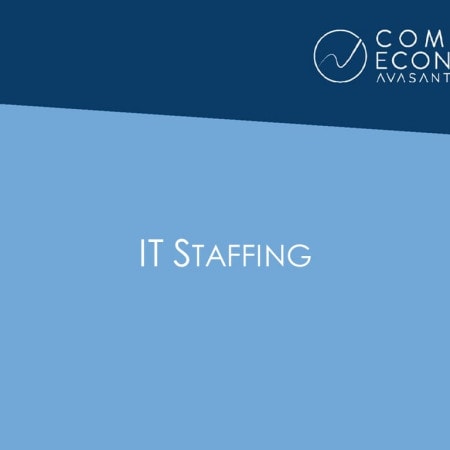-

Project Manager Staffing Ratios
Much of the work in an IT group is project based, which means project management should be a core competency. But how many project managers are truly required? In this study, we present five benchmarks: project managers as a percentage of the IT staff, users per project manager, application developers per project manager, applications per project manager, and capital budget per project manager. All of these ratios are presented by organization size. In addition, we look at the influence of sector on project management staffing. We conclude with recommendations on assessing the performance of the project management function. (19 pp., 10 figs.) [Research Byte]
March, 2012
-

Database Administration (DBA) Staffing Ratios 2012
Organizations are placing ever-increasing demands on the role of the database administrator (DBA). This study helps IT managers determine whether they are keeping pace with industry standards by providing three benchmarks: DBAs as a percentage of the IT staff, users per DBA, and applications per DBA. We present benchmarks for small, midsize, and large organizations. We also examine the influence of sector on the benchmarks and look at the three-year trend in DBA staffing. (18 pp., 11 figs.) [Research Byte]
February, 2012
-

Current Use of IT Contract Workers
The decision to use contract workers is an important one. There are pros and cons either way: flexibility versus stability, lower costs versus no fixed rates. Managing the contract workforce is a balancing act. In this study, we examine the use of contract workers as a percentage of the IT staff by organization size and sector. We also examine the five-year trend between 2007 and 2011 to discover how the use of contract labor has changed over time, particularly in light of the recent recession. The report concludes with our view on current and future trends in contract labor use. (9 pp.,4 figs.) [Research Byte]
December, 2011
-

IT Salaries Rising Despite Economic Slowdown
After several years of growing investment in technology, IT managers are now coming under pressure to restrain headcount, reduce costs, and improve the efficiency of their IT operations due to the slowing economy. At the same time, there is ample evidence that investments in Web-based initiatives, database-centric business applications development, and converged voice/data networks will continue to place upward pressure on salaries for certain job functions where skills are in tight supply. This free Research Byte is an executive summary of our 2008 IT Salary Report, which provides an analysis of IT staffing and salary trends from 2001 through 2007, including our projections for 2008. It also provides extensive tables of salaries for 78 IT job positions in 78 U.S. metropolitan areas for small, medium, and large organizations at the median, 25th, and 75th percentiles.
February, 2008
-

IT Staff Ratios and Trends: Executive Summary
Just as a record-setting summer heat wave or a particularly cold winter can mask long-term climate changes, so also focusing on the shift between hiring and firing from year to year can mask long-term changes in IT staffing. This article is an executive summary of our report, Long Term Trends in IT Staffing Ratios, which identifies the job categories are growing--and those that are shrinking--in the typical corporate IT department and what the shift in the job mix means for the future of IT staffing.
March, 2006
-

Long-Term Trends in IT Staffing Ratios
Over the past decade, the mix of jobs in the typical IT department has been changing, in ways that are not commonly recognized. This article, based on 10 years of our IT staffing metrics, identifies those changes and their significance for the future of IT staffing. The following job categories are analyzed in terms of their current percentage in the typical IT organization and relative growth or decline over the past five and 10 year periods: Application Development, System Management, Network Administration, Database Administration, QA/QC, Help Desk & PC Support, Website Management, Computer Operations, Documentation/Training, Administration & Clerical, and IT Management. (8 pp., 3 figs.)[Executive Summary]
March, 2006
-

IT Staffing Trends: A Rocky Road Continues for 2003 (1Q03)
Recent surveys indicate that IT staffing levels will remain relatively flat in 2003 and many organizations are struggling with "burnout" among their technical staff.
March, 2003
-

IT Staffing Trends in Organizations With ERP Applications in Place (Oct 2002)
Many organizations will be facing the need to move their operations to an ERP system to stay competitive and to control costs. The challenges of bringing your company into the ERP world are manageable, as many other organizations have demonstrated, but it will require a major investment of management time, creativity, and effort.
October, 2002

 Grid View
Grid View List View
List View